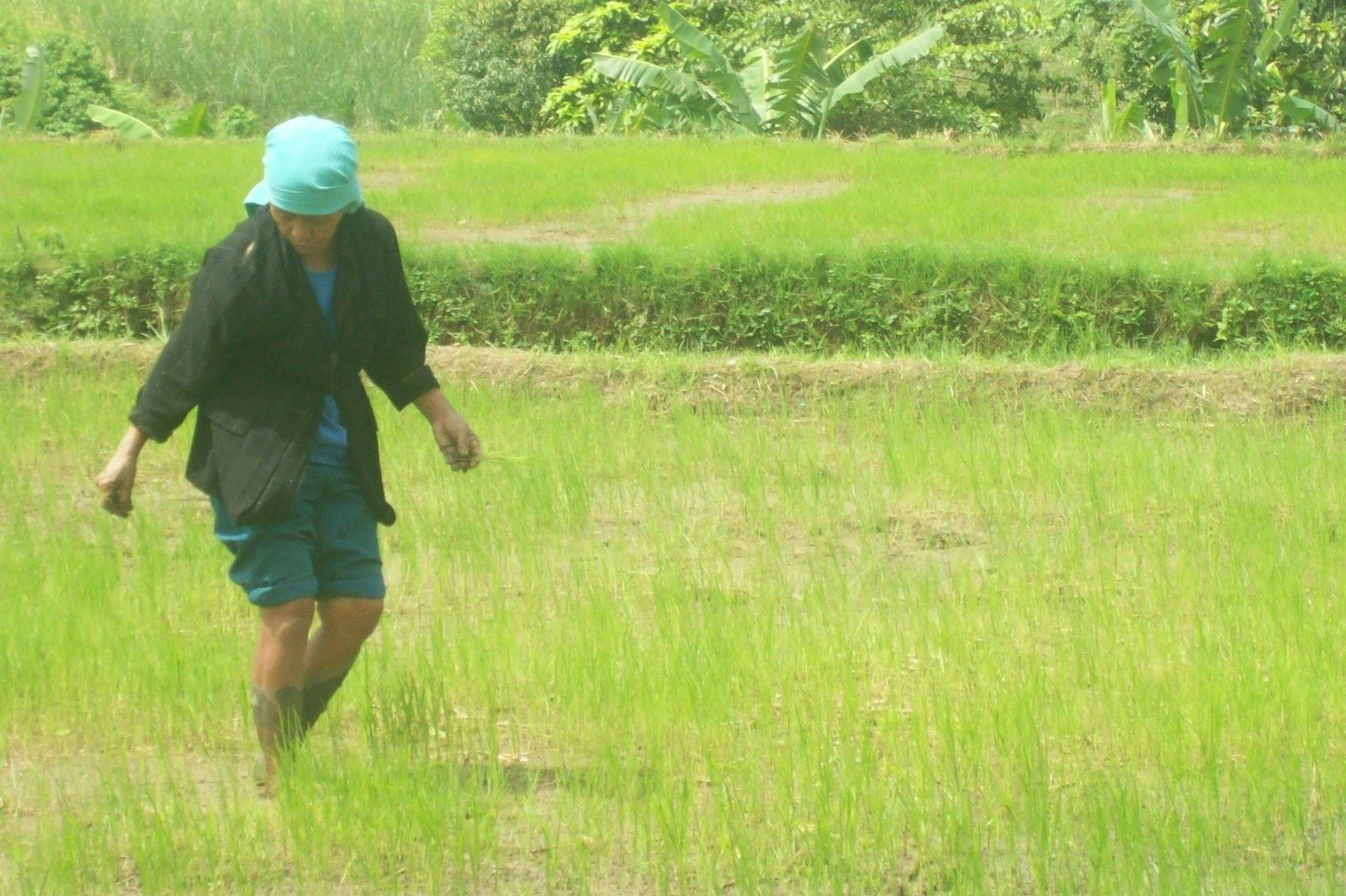Philippine Growth and Gender Gap: Some Realities on the Ground
May 28, 2019
Story

Today. the Philippines is reportedly the 2nd fast performing economy in Asia , second only to China. In addition, the country is cited to be friendliest to women having the smallest gender gap in Asia according to the World Economic Forum Gender Gap Index. Are women really benefiting from this new-found economic prosperity and narrowing of gender gap? If things are indeed looking up for the Filipinos, why is it the heads of the majority of Filipino women are still bowed by poverty?
Poverty is found in the rural areas and its face is a woman. Data from the UN Food and Agriculture Organization shows that poverty persists in the rural areas where 73% live and where most of them rely on farming for a living. The same study cited that women in particular, comprise a third of the agricultural sector.
Side by side with men, they are the workers in the ricefields and the growers of vegetables. They are the helpers of fisher-husband in the sea and tenders of the nets. They are the vendors of rootcrops and vegetables in the farmers market. They are the operators of many a micro business in the dotting the remote roads. But despite their contribution to growing food and giving labor where it is needed, Filipino women remains undervalued and invisible.
Widely regarded only as housewives, Filipino women farmers continue to experience inequality. In another a study made by Daryl Leyesa of Centro Saka, Inc., women in agriculture continue to experience inequality in various forms: only a third of women farmers have access to irrigation and seeds, a fourth to training and extension service, less than a fourth of them to fertilizer and seeds subsidy, and even less to financial assistance. Women laborers continue to get lower wages than the men. Ownership of the land tends to favor the men. Women comprise only 34.8% of the agrarian beneficiaries.(Philippine NGO BPA+10 Report, 2005).
Promises and Realities
While the government promises to give special attention to women farmers by giving them access to credit, training programs and marketing support, the reality lags behind. Agriculture remains the weakest among the economic sectors because of the decades-old neglect the national government gives to agriculture. Interest rates on agricultural loans are highest in the Philippines where average interest rates is 26.7%. The farmers suffer from high production cost because of low government support. Seeds and fertilizers are unsubsidized in the Philippines unlike in China, India and Indonesia. Irrigation water is also free in in Indonesia, Thailand, and Vietnam.
To make matter worse, the strongest storms the world ever saw, continue to hit many of the poorest areas, destroying crops, properties and lives in its wake. Due to extensive damage, rehabilitation is slow and will take time.
Further driving them into hardship is the rising food, electricity and fuel prices. In many cases, children have to stop schooling. Because of these hardships, more and more women are leaving their families to work in the city or to work abroad as domestic workers mostly in the Middle East. But with the heightened political turmoil in the Middle East increasingly posing dangers to the Overseas Filipino Workers (OFW), this looks like jumping from the frying pan to the fire.
Livelihoods, Not Dole Outs
The Philippines government tries to address this poverty by giving dole outs in form of cash transfers and encouraging labor export . But cash doleouts further strengthen dependency and mendicancy among the beneficiaries. The foreign remittances due to the Philippine labor export policy may have kept the economy afloat but at what price when families are broken and children are left unguided? The government should focus more on job creation and expanding livelihood opportunities in the rural areas to make the people stay in rural areas.
How do we empower women in agriculture? Women need to have more access to training and capacity building that will prepare them for livelihood opportunities. Access to agricultural credit and subsidies should also be improved. The government should promote sustainable agriculture rather than chemical –dependent agriculture. This is even more urgent as the Asean economic integration commences this year, where goods and services flow freely and competition becomes intense. Given the state of agriculture, our farmers are less prepared to compete and must therefore be assisted into becoming farmer-entrepreneurs.
Invest in and Empower Women
Experiences in development work in many parts of the globe show that when a project invest in women’s education and livelihood, their family and community directly benefit. They become better breadwinners. They become good managers of enterprises and cooperative. And several studies showed that when women earn, their money goes to put food on the table and send children to school. When a woman save, the savings is used to buy assets such as a pig or a motorcycle for transportation which further creates another source of income.
Many microfinance in the Philippines enjoys high repayment rate among women micro-enterpreneurs. Why not extend the same credit facilities to women farmers?
The economic growth that the Philippines experience today are largely benefitting the mall owners, electronics and telecommunication companies because it is consumption-driven. The government should create a favorable business environment not only to the big business but for the micro , small and medium entrepreneurs where women comprise the majority .
Economic growth must go past the highly urbanized populations and reach the rural women, families and communities in rural areas. And that can only happen when the age-old inequities faced by women in agriculture where the majority of the population are, will be addressed .Only then that can Filipino women who holds a third of the sky, really benefit from the newfound economic prosperity.
Resources:
1. Fact Sheet Philippines – Women in agriculture, environment and rural production by FAO (2005)
2.The Philippines in the global economic crisis: the social and local dimensions by ILO (2010)




